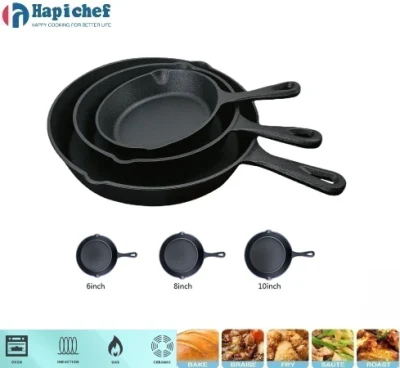cast iron cooking plate
The Versatility and Benefits of Cast Iron Cooking Plates
Cast iron cooking plates have been a staple in kitchens around the world for centuries, revered for their ability to retain heat and distribute it evenly. These versatile cooking tools are not only functional but also offer a unique connection to culinary traditions that date back to ancient civilizations. In recent years, cast iron cooking plates have seen a resurgence in popularity, appealing to both professional chefs and home cooks alike. This article explores the benefits and uses of cast iron cooking plates, making a case for why they deserve a spot in every kitchen.
Heat Retention and Distribution
One of the most significant advantages of cast iron cooking plates is their exceptional heat retention and distribution capabilities. Unlike other materials that may cool down quickly, cast iron maintains heat for an extended period. This characteristic is particularly beneficial for techniques such as searing meat, where achieving a high and consistent temperature is crucial. Whether you’re frying, grilling, or baking, a cast iron plate ensures that your food cooks evenly, helping to build those consistent flavors that elevate a dish.
Durability and Longevity
Investing in a cast iron cooking plate is a decision that pays dividends over time. These cooking tools are almost indestructible—unlike many modern cookware materials, cast iron can withstand high temperatures and rough handling without warping or deteriorating. With proper care, a cast iron cooking plate can last for generations, often becoming a treasured family heirloom. Many cooks find that the more they use and care for their cast iron, the better its non-stick properties become, leading to an improved cooking experience over time.
Versatility in Cooking
Cast iron cooking plates are incredibly versatile. They can be used on a variety of heat sources, including gas stoves, electric burners, and even open flames. This adaptability makes them suitable for a range of cooking methods, from stovetop grilling to oven baking. Some cast iron plates are designed for outdoor use as well, making them perfect for barbecues and campfires.
cast iron cooking plate

Additionally, you can cook virtually any food on a cast iron plate, from breakfast items like eggs and pancakes to dinner entrees such as steak and roasted vegetables. The ability to transition from stovetop to oven or grill without changing cookware makes cast iron plates a favorite among chefs looking to streamline their cooking process.
Health Benefits
Cooking on a cast iron plate can have health benefits as well. Unlike Teflon or other non-stick coatings, cast iron does not leach harmful chemicals into your food. Moreover, when cooking with cast iron, small amounts of dietary iron can be transferred to the food. This can be beneficial for individuals with iron deficiencies.
Eco-Friendly Considerations
In an age where environmentally-conscious cooking practices are gaining traction, cast iron plates are an eco-friendly choice. These cooking tools are made from natural materials and are free from synthetic coatings that can degrade over time. Additionally, because cast iron cookware can last a lifetime or longer, they contribute less to kitchen waste compared to disposable or less durable cookware.
Conclusion
In conclusion, cast iron cooking plates combine practicality with tradition, offering durability, versatility, and health benefits while also being environmentally friendly. Whether you are a seasoned chef or an enthusiastic home cook, incorporating a cast iron cooking plate into your kitchen repertoire can enhance your culinary endeavors. Embrace the charm and efficiency of cast iron cooking plates, and experience how they can elevate your cooking to new heights. Their timeless appeal and functionality make them not just a choice but a necessity in today’s kitchen.
-
Why Every Kitchen Needs a Casserole Cast Iron DishNewsJun.24,2025
-
Experience the Tradition and Quality of Cast Iron CookwareNewsJun.24,2025
-
Double Sided Cast Iron Grill PanNewsJun.24,2025
-
Cast Iron Dutch Ovens You’ll Actually UseNewsJun.24,2025
-
Buy Cast Iron Griddle for Everyday CookingNewsJun.24,2025
-
Barbecue Iron Grill Cooking PowerNewsJun.24,2025
-
Standard Product Lines from Cast Iron Cookware SuppliersNewsJun.11,2025
